Getting enough iron as a vegetarian or vegan may seem difficult but it doesn't have to be! This guide breaks down the science of iron and best plant-based iron sources along with iron-rich recipes.
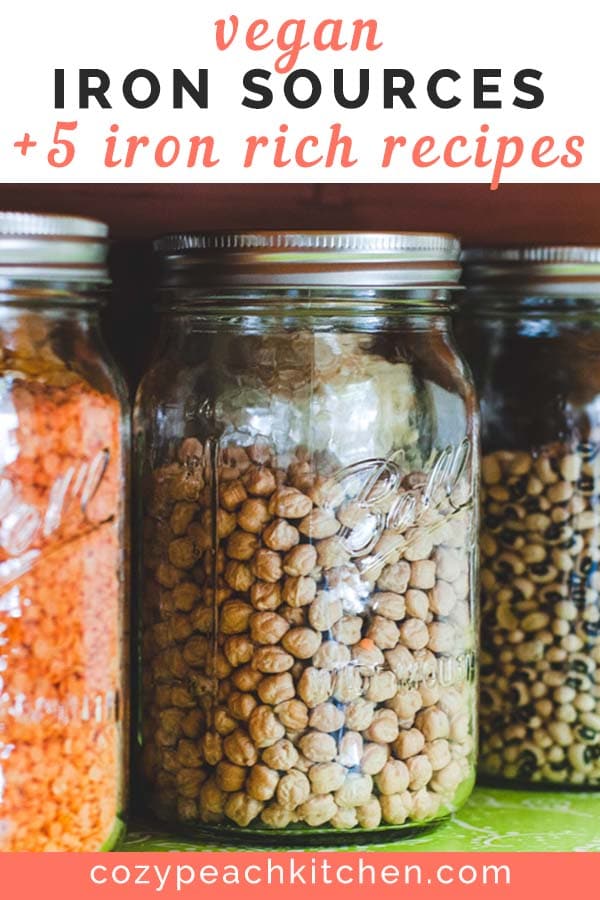
As a dietitian who also happens to be vegetarian, I'm frequently asked: "How do you get enough iron without meat?"
This is a great question because iron deficiency is common in both vegetarian and non-vegetarian diets. In fact, iron deficiency is one of the most common mineral deficiencies in the United States.
Getting enough iron with a vegan or vegetarian diet doesn't have to be hard.
In this article, we'll review the role of iron in the body, plant-based sources of iron, and easy ways to optimize iron absorption on a vegan diet.
Importance of iron
Iron is an essential mineral needed for DNA synthesis, immune system function, and red blood cell development.
One of the most common things iron does is to help produce hemoglobin, which acts as a transporter of oxygen in the body. Hemoglobin takes oxygen from the lungs and moves it through the bloodstream, where it's dropped off at the tissues. Hemoglobin then takes carbon dioxide back to the lungs where it's exhaled.
Without enough iron, your body may become iron deficient. Symptoms of iron deficiency include:
- Fatigue
- Weakness
- Pale skin and fingernails
- Brittle nails
- Hair loss

Types of iron
There are two kinds of iron found in food: heme iron and non-heme iron.
Heme iron is present in animal foods (meat and fish) and is easier for the body to absorb than non-heme iron. In fact, the body may absorb up to two to three more times iron from animals than from plants (1).
Plant foods contain only non-heme iron. Non-heme iron is less easily absorbed by the body because of compounds like phytates and polyphenols. These compounds make it more difficult for your body to take in the iron contained in the food (2).

Vegan iron sources
Many sources of vegan protein are also good sources of iron. Vegetables and grains can also be good sources of iron.
Overview of iron sources:
- Best iron rich vegetables include leafy greens like spinach, kale, and collard greens
- Legumes, beans and quinoa
- Soy foods like tofu, tempeh, edamame
- Iron-fortified cereals
- Enriched breads and grains
- Molasses
Below is just a small sampling of plant-based foods that contain iron.
| Ingredient | Amount | Iron (mg) |
| Lentils, cooked | 1 cup | 6.6 |
| Tofu | ½ cup | 6.6 |
| Spinach, cooked | 1 cup | 6.4 |
| Kidney beans, cooked | 1 cup | 5.2 |
| Chickpeas, cooked | 1 cup | 4.7 |
| Black-eyed peas, cooked | 1 cup | 4.3 |
| Pinto beans, cooked | 1 cup | 3.6 |
| Iron-fortified veggie dog | 1 hot dog | 3.6 |
| Quinoa, cooked | 1 cup | 2.8 |
| Peas, cooked | 1 cup | 2.5 |
| Cashews | ¼ cup | 2 |
| Potato with skin | 1 large | 1.9 |
| Veggie burger | 1 patty | 1.4 |
| Broccoli, cooked | 1 cup | 1.0 |
| Kale, cooked | 1 cup | 1.0 |
| Turnip greens, cooked | 1 cup | 1.0 |
Many kinds of cereal and grains are fortified with iron. Check a packaged food's nutrition label to see if iron has been added.
Source: USDA Nutrient Data Laboratory
How to optimize iron absorption
Vitamin C: Iron absorption is enhanced when iron-containing foods are consumed with a significant source of Vitamin C.
For example, consume a stir fry with tofu (iron), broccoli, and red pepper (Vitamin C). Or enjoy iron-fortified cereal and iron-fortified soy milk (both contain iron) with sliced strawberries (Vitamin C).
Tannins: Coffee and tea contain compounds called tannins which can reduce the absorption of iron. Drink coffee and tea between meals to allow for optimal iron absorption with meals.
Calcium can also decrease the absorption of iron. If you're taking an iron supplement, avoid taking it with calcium supplements.
Vitamin C rich foods
Many fruits and vegetables are a good source of Vitamin C.
- Bell peppers
- Spinach and kale
- Broccoli, Brussel sprouts, cauliflower
- Citrus fruits like oranges and lemons
- Strawberries, papayas, and cherries
How to get enough iron
One of the best ways to optimize your iron intake is to eat a balanced diet that contains a variety of vegetables, grains, and legumes.
Here are some quick tips to optimize your iron intakes:
- Include a variety of iron-rich foods in your diet
- Pair iron-rich foods with foods high in Vitamin C to increase absorption
- Drink coffee and tea between meals
- If taking a calcium supplement, take it between meals
Concerned that you have an iron deficiency? Contact your physician or a registered dietitian before starting an iron supplement.
Iron FAQ
Iron needs vary based on age and sex. Generally speaking, 19-50 year old males need 8 mg and 19-50 year old females need 18 mg per day (source).
Vegetarians and vegans need 1.8 times higher the recommended dietary allowance (RDA) for iron. This is because non-heme iron is more difficulty to absorb than heme iron.
A well-planned vegan diet that includes a variety of vegetables, legumes and grains can be high in iron just like a non-vegan diet.
Dark leafy greens like spinach and kale are some of the best sources of iron in vegetables. Potatoes also contain iron in their skins.
Iron-rich vegetarian recipes
- Vegetarian Black Bean and Tortilla Soup: Black beans (iron), red bell peppers (Vitamin C)
- Red Lentil Curry with Sweet Potatoes: Lentils (iron) sweet potatoes and spinach (Vitamin C)
- Spring Roll Bowls: Tofu and edamame (iron), red cabbage and cucumbers (Vitamin C)
- Roasted Vegetables with Tempeh: Tempeh (iron), Brussel sprouts and carrots (Vitamin C)
- Quinoa Taco Salad: Red beans and quinoa (iron), tomatoes and red bell pepper (Vitamin C)
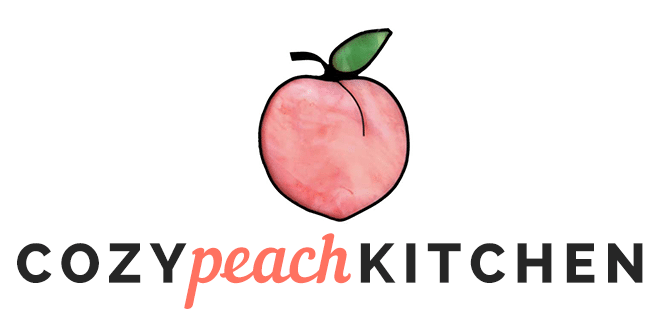


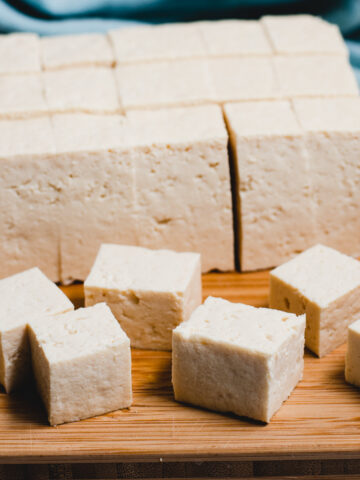
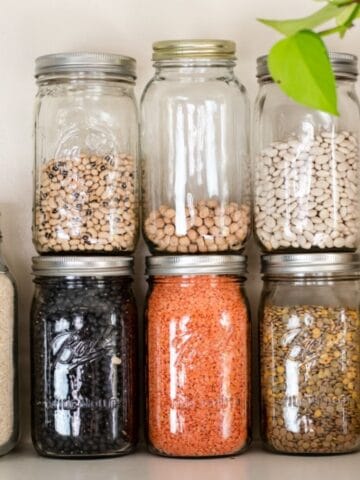
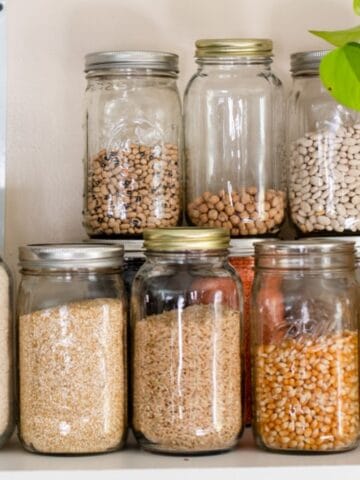
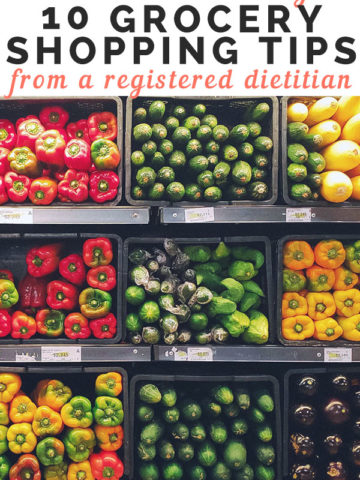
Pamela Wisniewski
Enjoyed getting more information about iron absorption, as I eat very little meat. I am anemic due to small internal bleeds, so I'll always need medical treatment for my anemia. I was wondering if cooking in an iron skillet really does cause leaching of some iron, and might assist with elevating my iron levels more rapidly?
Cassidy Reeser
I'm glad you found it helpful! The current research, although limited, does show that cooking in cast iron can help increase iron availability in foods. I'd say that cooking in cast iron is a helpful tool in addition to other approaches in increase iron.